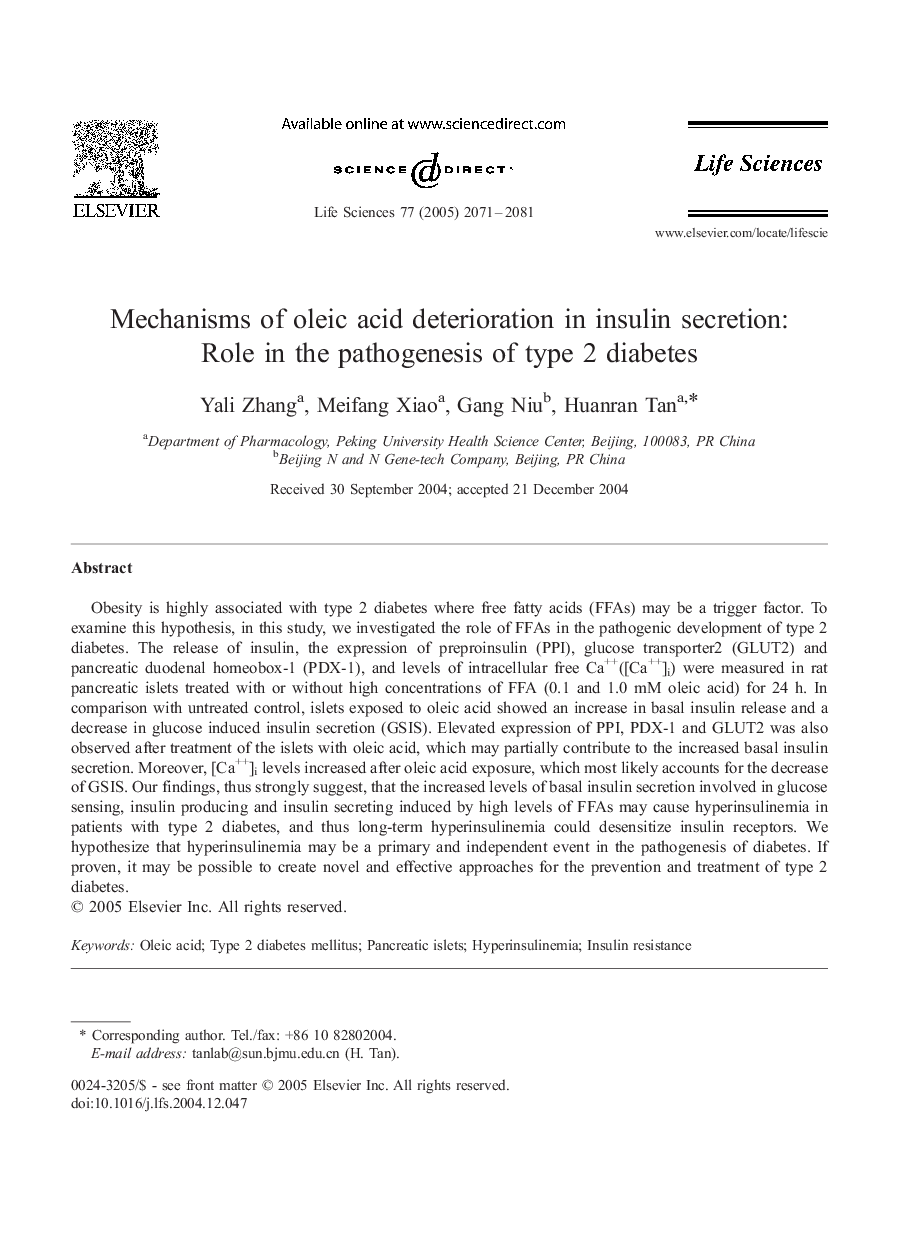| Article ID | Journal | Published Year | Pages | File Type |
|---|---|---|---|---|
| 2555217 | Life Sciences | 2005 | 11 Pages |
Abstract
Obesity is highly associated with type 2 diabetes where free fatty acids (FFAs) may be a trigger factor. To examine this hypothesis, in this study, we investigated the role of FFAs in the pathogenic development of type 2 diabetes. The release of insulin, the expression of preproinsulin (PPI), glucose transporter2 (GLUT2) and pancreatic duodenal homeobox-1 (PDX-1), and levels of intracellular free Ca++([Ca++]i) were measured in rat pancreatic islets treated with or without high concentrations of FFA (0.1 and 1.0 mM oleic acid) for 24 h. In comparison with untreated control, islets exposed to oleic acid showed an increase in basal insulin release and a decrease in glucose induced insulin secretion (GSIS). Elevated expression of PPI, PDX-1 and GLUT2 was also observed after treatment of the islets with oleic acid, which may partially contribute to the increased basal insulin secretion. Moreover, [Ca++]i levels increased after oleic acid exposure, which most likely accounts for the decrease of GSIS. Our findings, thus strongly suggest, that the increased levels of basal insulin secretion involved in glucose sensing, insulin producing and insulin secreting induced by high levels of FFAs may cause hyperinsulinemia in patients with type 2 diabetes, and thus long-term hyperinsulinemia could desensitize insulin receptors. We hypothesize that hyperinsulinemia may be a primary and independent event in the pathogenesis of diabetes. If proven, it may be possible to create novel and effective approaches for the prevention and treatment of type 2 diabetes.
Related Topics
Health Sciences
Medicine and Dentistry
Cardiology and Cardiovascular Medicine
Authors
Yali Zhang, Meifang Xiao, Gang Niu, Huanran Tan,
